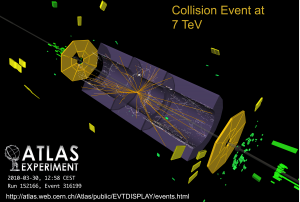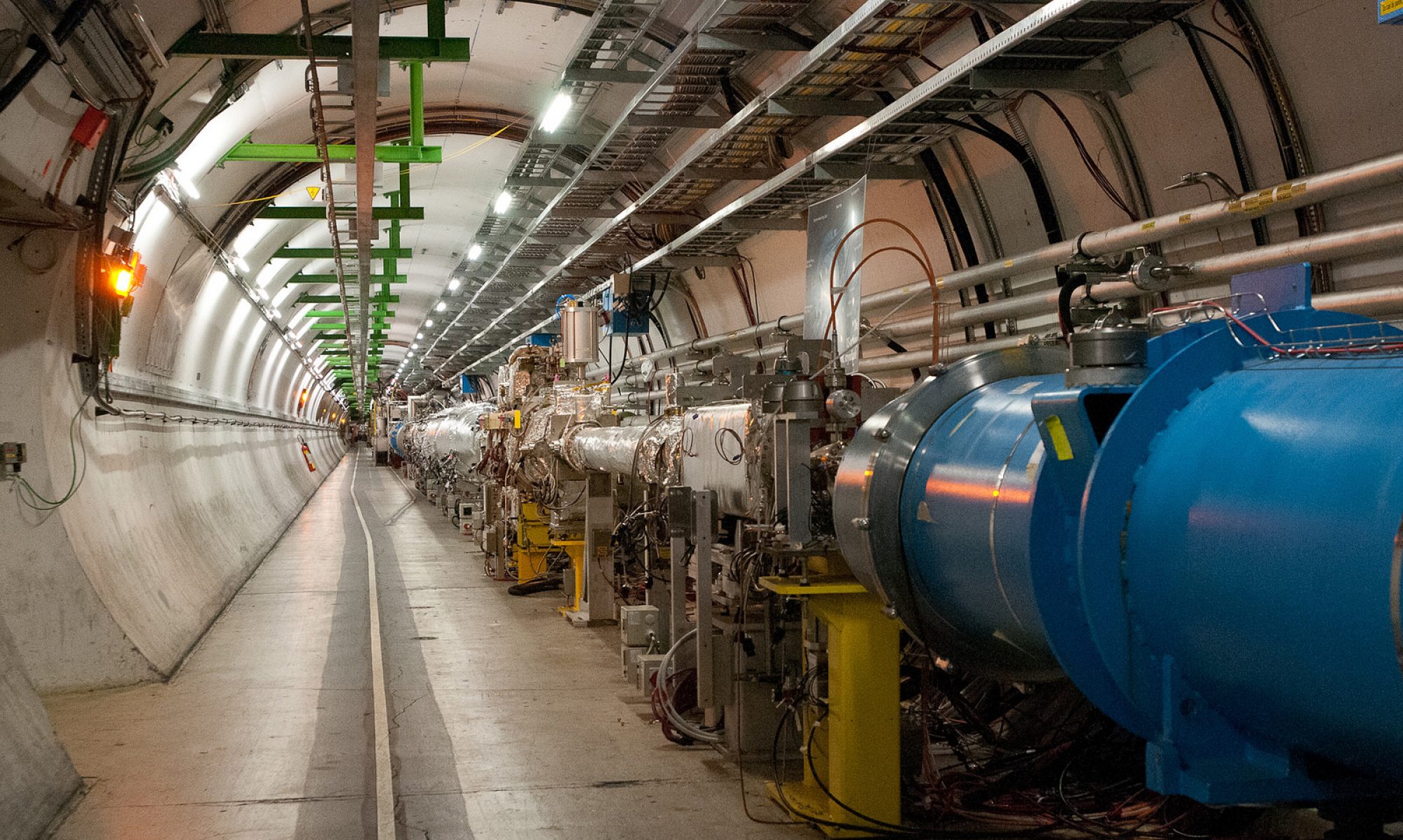The sun was still not up in Dallas when the Large Hadron Collider started smashing protons together at 7 trillion electron volts. I had been up since 5 am, doing my “day” shift on the ATLAS experiment. I’m tasked with quality control work, checking the status of data once a unit of that data (a “run”) has concluded and processed. This was to be the big day, when all the work of two decades paid off and CERN became the crowned champion of collider energies. Around 6am Central U.S. time, came the start of something great: collisions at an energy never before witnessed by human eyes. (For me, it was ATLAS Run 152166. Sounds less glorious when you look at it that way!)
Energy and time are intimately related. The further back in time you go, the smaller, more dense, and hotter the universe was. At a time some billionth of a second (or so) after the Big Bang, temperature in the universe made energies like those produced by the LHC quite common. So, in a sense, the LHC is the best time machine ever created by our species: it recreates a moment after the Big Bang when 7 trillion electron volts of energy was commonplace. It is our means to recreate a scene not played for 13.7 billion years. Our particle detectors are the windows that pierce the subatomic veil and give us our view of these fantastic energies.
This day marks the beginning of what should be a 1.5 year run at this energy. Now, the critical work of understanding the data begins. Now, we get busy.


